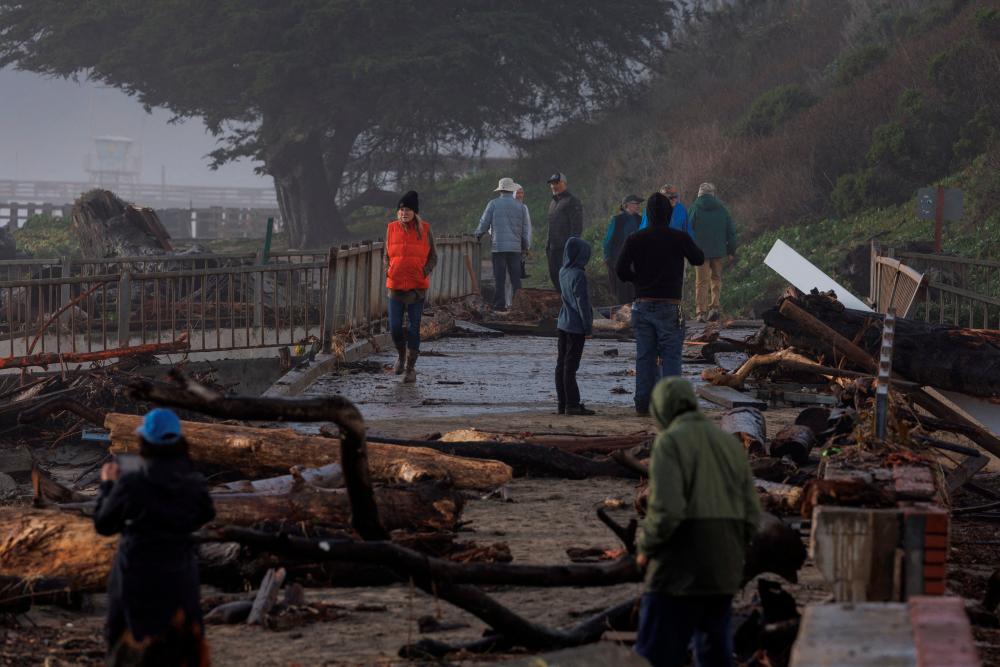Santa Cruz: Torrential downpours and damaging winds left hundreds of thousands of homes and businesses without power in California late on Sunday as the area braced for the next onslaught of severe weather.
More than 330,000 homes and businesses were reported to be still without power in California as of 3:08 ET on Sunday night, according to data from PowerOutage.us.
At least six people have died in the severe weather since New Year’s weekend, including a toddler killed by a fallen redwood tree crushing a mobile home in northern California.
Forecasters have meanwhile warned yet another “atmospheric river” of dense, moist tropical air will clobber California on Monday with rain and mountain snow.
An NWS weather alert on Saturday warned that the cumulative effect of successive heavy rain storms since late December could bring rivers to record high levels and cause flooding across much of Central California.Forecasters warned that northern and Central California was still in the path of a “relentless parade of cyclones” on Sunday, promising little relief for the region.
Two overlapping phenomena — an immense airborne stream of dense moisture from the ocean called an atmospheric river and a sprawling, hurricane-force low-pressure system known as a bomb cyclone — have caused devastating flooding and record snowfall over the past week.
The latest storms vividly illustrated the consequences of warmer sea and air temperatures caused by climate change.”The West Coast remains under the target of a relentless parade of cyclones that form and intensify over the Pacific Ocean,” the National Weather Service (NWS) said in a Sunday morning forecast.
In the last week, severe weather spawned violent wind gusts that toppled semi-trucks, flooded the streets of small towns along northern California’s coast and churned up storm surge that destroyed a pier in the beach city of Santa Cruz.
The heavy rain and snow have already caused significant flooding and ground saturation, meaning the next storm to move through early this week would bring an additional flood threat, the NWS said.
Five feet (1.5 metres) of snow could fall on the Sierra Nevada mountains by Tuesday.











